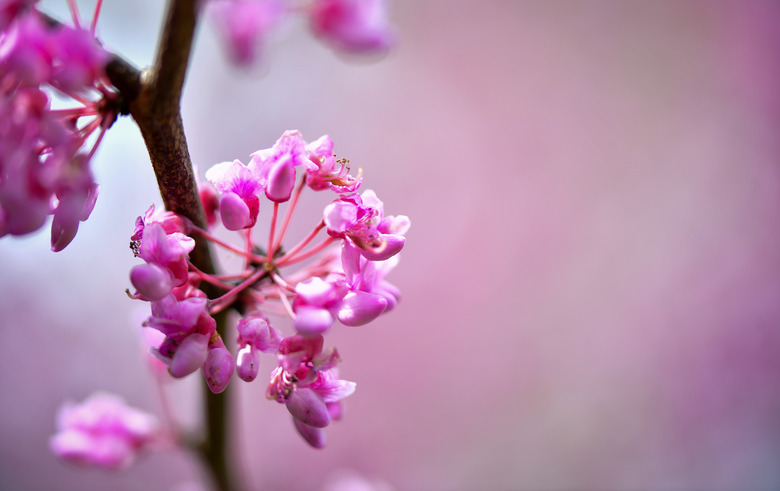Redbud Tree Leaf Diseases
Redbud trees (Cercis spp.) are small ornamental species grown for their clusters of eye-catching purply-pink blooms and heart-shaped leaves. The eastern redbud (Cercis canadensis) is a species native to North America that is popular from coast to coast. There are many cultivars available, some with white blooms.
Proper care can prevent redbud tree diseases, which include verticillium wilt and cankers, as well as leaf spots and powdery mildew.
Diseases Affecting Redbud Trees
| Condition | Symptoms | Treatment |
| Leaf Spots | Brown leaf spots that may be round or angular and have a halo around them. | Apply a fungicide formulated for trees every 10 days. |
| Powdery Mildew | Powdery white substance on the foliage. (Note: this is generally not considered a serious disease). | If early in the season, apply fungicide. If late in the season, just wait for the leaves to fall off. |
| Canker | Dead leaves on one or a few of the branches. Later stages cause sunken, diseased areas on branches. | Use disinfected shears to prune out infected branches. Practice good watering and fertilizing habits to aid prevention. |
| Verticillium Wilt | Leaf wilting and a yellowing of the foliage. Over time, branches die back until the entire tree eventually dies. | No effective treatment. Avoid planting in the same spot where a tree became infected with the disease. |
Leaf Spots in Redbud Trees
Redbud trees can develop brown leaf spots that may be round or angular and have a halo around them. These leaf spots are caused by a fungus and, in addition to being unsightly, can result in a redbud tree losing its leaves.
Treatment
If your redbud develops leaf spots, apply a fungicide formulated for trees every 10 days. Treat the tree with fungicide during long stretches of rainy weather, as wet weather encourages the development of fungal leaf spots.
Powdery Mildew
Many ornamental plants are prone to a fungal leaf condition known as powdery mildew that results in a powdery white substance on the foliage. Powdery mildew is not considered a serious disease on a redbud, however it can affect its appearance.
Treatment
Fungicides can help control powdery mildew in ornamental trees like the redbuds. If the disease develops late in the season, when redbuds are close to losing their leaves, it may not be worth treating the condition.
Beware of using horticultural oil, however, for although it can be effective against powdery mildew, it can cause injuries to redbuds and other species.
Warning
Horticultural oil can also be effective against powdery mildew but can cause injuries to redbuds and other species.
Canker on Redbud Trees
If you notice dead leaves on one or a few branches of a redbud tree, a fungal disease known as Botryosphaeria canker may be to blame.
The fungus that causes this canker enters branches through wounds and cuts off the flow of water to the leaves, which then die. Botryosphaeria canker causes sunken, diseased areas on branches. It is considered the most prevalent and destructive redbud tree disease.
Treatment
There is no fungicide you can use to treat a redbud tree showing Botryosphaeria canker. The best management practice is to use disinfected tools to prune out infected branches.
Botryosphaeria canker tends to develop in trees that are under stress, so watering and fertilizing your redbud tree well can help prevent this disease. Water redbud thoroughly every week and fertilize in the spring at intervals of six weeks with a slow-release tree and shrub fertilizer.
Verticillium Wilt in Redbuds
Redbud trees can become affected by a soil-borne fungus called Verticillium dahliae that causes a fatal disease known as verticillium wilt.
The fungus enters redbud and other host trees through the roots and spreads throughout the plant through water-conducting tissues, resulting in leaf wilting and a yellowing of the foliage known as chlorosis. Over time, branches die back until eventually, the entire tree dies.
Treatment
There is no way to treat verticillium wilt in redbuds. The pathogen that causes verticillium wilt can survive in the soil for years, so avoid planting redbuds and other susceptible species in the same soil where the disease was known to recently affect trees.
